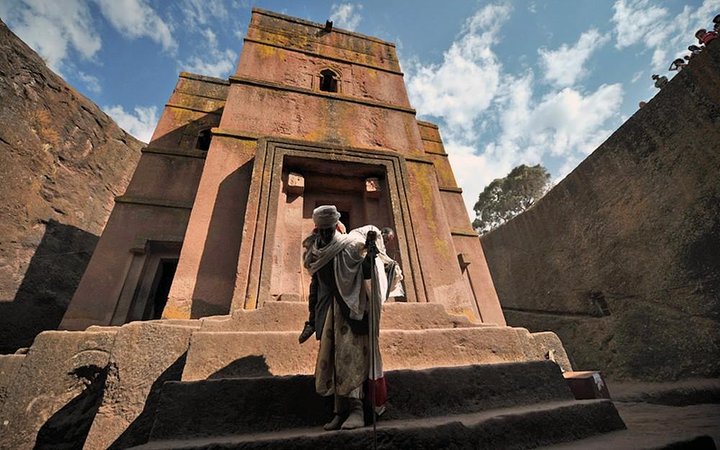Unveiling the Mysteries of Lalibela: A Cultural Odyssey
Drawn by the allure of ancient history and cultural richness, I embarked on a journey to Lalibela, Ethiopia. Join me as I explore the rock-hewn churches and immerse myself in the vibrant traditions of the Lasta people.
A Journey Through Time: The Rock-Hewn Churches of Lalibela
As I embarked on my journey to Lalibela, a place often referred to as the “New Jerusalem,” I was filled with anticipation. The allure of the ancient rock-hewn churches, a UNESCO World Heritage site, was irresistible to someone like me, who has spent a lifetime exploring the intersections of culture, history, and art. Upon arrival, the air was thick with the scent of incense, and the rhythmic chants of the priests echoed through the stone corridors, setting the stage for an experience that would transcend time.
The churches of Lalibela are not merely structures; they are a testament to the ingenuity and devotion of the Ethiopian people. Carved directly into the rock, these monolithic churches are a marvel of engineering and artistry. Each church is unique, with intricate carvings and frescoes that tell stories of faith and perseverance. As I wandered through the labyrinthine passages, I couldn’t help but feel a profound connection to the past, as if the stones themselves were whispering the secrets of centuries gone by.
The highlight of my visit was the early morning mass at the Church of St. George, the most famous of the Lalibela churches. The sight of the faithful, draped in white robes, gathered in prayer as the first light of dawn illuminated the church, was a moment of pure serenity. It was a reminder of the enduring power of faith and the role it plays in shaping the cultural identity of a people.
Exploring the Surrounding Wonders: Asheten Maryam and Yemerhane Kirstos
Beyond the rock-hewn churches, Lalibela offers a wealth of historical and cultural treasures waiting to be discovered. One such gem is the Asheten Maryam Church, perched high on a mountain overlooking the town. The hike to the church is a journey in itself, offering breathtaking views of the surrounding landscape. As I ascended the rugged path, I was accompanied by the gentle hum of nature, a symphony of birdsong and rustling leaves.
Reaching the summit, I was greeted by the sight of the Asheten Maryam Church, a humble yet striking structure that has stood the test of time. Inside, the walls are adorned with ancient paintings, their colors still vibrant despite the passage of centuries. It was a humbling experience to stand in a place that has been a site of pilgrimage for generations, a testament to the enduring spirit of the Ethiopian Orthodox Church.
Another highlight of my journey was the visit to the Yemerhane Kirstos Church, located just outside Lalibela. This church, built within a cave, is a masterpiece of Axumite architecture. The wooden beams and stone walls create a harmonious blend of natural and man-made beauty. As I explored the dimly lit interior, I was struck by the sense of peace that enveloped the space, a sanctuary from the outside world.
A Cultural Tapestry: The People and Traditions of Lalibela
While the churches of Lalibela are undoubtedly the main attraction, it is the people and their traditions that truly bring the town to life. The Lasta (Agew) people, with their rich cultural heritage, are the heart and soul of Lalibela. Their warmth and hospitality made my stay unforgettable, as I was welcomed into their homes and invited to partake in their daily rituals.
One of the most memorable experiences was sharing a traditional Ethiopian meal with a local family. The meal, served on a large platter, was a feast for the senses, with an array of flavors and textures that reflected the diversity of the region. As we ate, we exchanged stories and laughter, bridging the gap between our worlds through the universal language of food.
My journey to Lalibela was more than just a visit to a historical site; it was an immersion into a culture that has preserved its traditions and beliefs for centuries. It was a reminder of the importance of preserving our cultural heritage and the role it plays in shaping our identity. As I boarded my flight back to Addis Ababa, I carried with me not just memories of the stunning landscapes and architectural wonders, but a deeper understanding of the rich tapestry of human history that Lalibela represents.












































